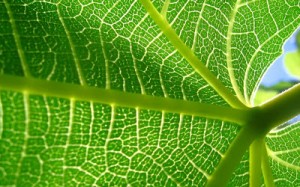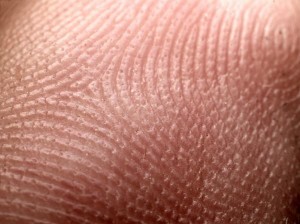 I like writing tweets. Posting one a day for the past few years, I’ve posted over 2,000 of them. I like that Twitter forces me to get what I want to convey down to within their limit of 140 characters and still get my inspiration across. (By the way, that last sentence is 140 characters, including the punctuation.) I wrote a tweet recently that went like this: “May any pain be an invitation to slow down, pay attention, and reduce the experience to being the mere constellation of elements that it is.” Yes, that’s also exactly 140 characters but consummation of character quota is not the point I want to get across in this blog. The blog post I’m writing here is a response to a great question someone posed to that tweet: “I keep reading this statement over & over..once one acknowledges the constellation of elements..is the pain supposed to subside?” I’d like to respond by sharing a couple personal stories.
I like writing tweets. Posting one a day for the past few years, I’ve posted over 2,000 of them. I like that Twitter forces me to get what I want to convey down to within their limit of 140 characters and still get my inspiration across. (By the way, that last sentence is 140 characters, including the punctuation.) I wrote a tweet recently that went like this: “May any pain be an invitation to slow down, pay attention, and reduce the experience to being the mere constellation of elements that it is.” Yes, that’s also exactly 140 characters but consummation of character quota is not the point I want to get across in this blog. The blog post I’m writing here is a response to a great question someone posed to that tweet: “I keep reading this statement over & over..once one acknowledges the constellation of elements..is the pain supposed to subside?” I’d like to respond by sharing a couple personal stories.
In the 1980s I used to attend vipassana retreats at the Insight Meditation Society in Barre, Massachusetts. I had two experiences there that deepened my understanding of experience, itself. The first occurred when I was sitting in meditation. As one does in vipassana, I was going about the business of focusing my attention onto the physical sensations I felt with each in-breath and with each out-breath, responding to each distractive thought, sound or sensation by acknowledging it and bringing my attention back to my breath.
About 20 minutes into this particular session, a feeling of hunger came over me. You know, that moment when your stomach lets you know it’s there. I noticed it, acknowledged “sensation”, and returned my attention to my breath. A moment later, the same thing happened again – more hunger, more acknowledgment, and more redirection of attention. As time went on, though, I was getting so hungry that my stomach’s demand for attention was bigger than my ability to support my intention of focusing on my breath.
I took a few moments out of meditation and, while still sitting there with my eyes closed, I made a decision to try an experiment. I redefined the terms of my intention to be that I would keep my focus on my hunger and treat anything else that grabbed my attention, even the physical sensation of my breath, as distraction.
What ensued is what fascinated me. I started to notice that this thing I experienced as “hunger” was actually a constellation of separate elements such as heat, swirl, compression, pulsation, and density. Within every moment of “hunger”, I was able to attend to each of these tracks of my experience and study their own aliveness. This was an incredible discovery. What took my insight into ecstasy, though, was then realizing that while I could feel all of these events occurring inside me, I was no longer “hungry”. There was hunger, but I wasn’t hungry. I was the observer of it and it no longer was the source of any personal drama. It no longer demanded my attention. After enjoying a few moments of mild amusement, I again gave my breath the honor of being the home base of my attention and returned to normal vipassana practice.
What I learned from this is that while experience is clearly influenced by circumstance, it is our ability to direct our attention – and where we direct it – that determines what we actually experience. Sure, we all know that the mind filters out all sorts of details so we can function but, for me, this was an empirical demonstration of putting that to practical use. What a valuable lesson. And this was not the last time I got this lesson from being in Barre.
At each retreat I did there, I would spend my days in silence, doing 45 minutes of sitting, 45 minutes of meditative walking, switching between those two activities from early morning to the wee hours of the morning. (Clearly, no more sleep was needed than that!) In the practice of vipassana walking, which is similar to zen walking, you walk very slowly, moving each body part incredibly slowly such that you can mindfully see and experience what you’re doing, as well as bring your attention back from any distractions.
 On one particular retreat I did there in the cold winter months, I made a radical change to my practice. While doing my walking practice, and facing a glass door to the world that existed beyond my 30 footstep universe, I could see there was about half a foot of fresh snow outside. I decided to walk right out the door, into the snow. Ah, the crisp air, the shift in consciousness to a more wakened state. Aside from wearing only light comfortable clothes, I was barefoot. It turned out the air was not so cold but, of course, the snow on the ground was not at all warm.
On one particular retreat I did there in the cold winter months, I made a radical change to my practice. While doing my walking practice, and facing a glass door to the world that existed beyond my 30 footstep universe, I could see there was about half a foot of fresh snow outside. I decided to walk right out the door, into the snow. Ah, the crisp air, the shift in consciousness to a more wakened state. Aside from wearing only light comfortable clothes, I was barefoot. It turned out the air was not so cold but, of course, the snow on the ground was not at all warm.
Walking as slowly and mindfully as I had done for days inside the building, I was now letting in the sensation provided by the environment outside. And it was another incredible experience. Suspending vague labels that one would associate to the sensations of walking barefoot on snow, I allowed the sensations to be present and allowed myself to observe them as pure sensation. Got that? No labels, just sensation. I watched and as I ever-so-slowly took step after step in the snow, I saw the sensations morph between two opposite states, states my undisciplined mind wanted to refer to as cold and hot, freezing and burning. The more I simply noticed, succeeding in not indulging my mind’s yearning to label, the more comfortable it was for me to simply be with what was beneath the so-called throb, burn, and freeze. Beyond all these such labels, the experience was simply “sensation”. Not good, not bad, not hot, not cold; just sensation.
This was very freeing. That objectivity opened the way for me to make a next empirical and ecstatic leap by experiencing the sensation as “energy”. That is, the sensation had an oscillating energetic quality to it that I could focus my attention onto – pulses, throbs, sine-wave-like rhythms that sped up and slowed down, producing moments of pain and, by slowing my attention down enough to notice, moments of freedom.
What I realized is that when I was experiencing pain, I was putting my attention onto the density formed by the tight clashing of energy waves. Nature made it easy for my mind to go there. But I discovered that even with the actual phenomenon occurring in my body that produced a density of energy – pain – I was able to free myself of the experience of pain by shifting my attention away from the density and onto the space between the waves. As esoteric as that sounds, I was simply slowing my mind down such that I was present to each moment of sensation. Sensation is energy, and energy is a wave, and it moves not only through your body but through time, and time is subjectively nothing by a string of moments. By slowing down to notice the difference in my experience with each moment to moment incremental movement of the wave, I was able to shift my attention from the moments of peak density of the waves to the moments when there was the least density. With that, the “story” of my experience changed.
By the time I came back inside, I was enjoying my relationship with that spaciousness, grounded in my awareness of the micro and the macro, and seeing the roles that get played out in the story of our experience that we fail to recognize as simply being “story”. As real as pain is, it is real to us only on certain levels of experience. Pain is the story we get stuck with when we don’t step out of our day to day level of attention to get a closer moment to moment look.
I was out there only about 10 minutes, which was 10 minutes of experiencing the hierarchy of human interface with experience. What I observed was the continuum that ranges from emotional experience down to story down to connotation down to label down to sensation down to energy down to the nature of the universe. I came away with the consideration that maybe the more a person is able to slow down their attention to see what’s in each moment, the more conscious the person is, and the more they are able to step back to observe what they are doing at each of these levels of interpreting reality, and therefore consciously choose their experience.
So, getting back to the question, ‘is the pain supposed to subside after one acknowledges the constellation of elements?’, I’m going to limit my answer to what I learned from my own small but enlightening experience.
 When you really attend with quality attention to the elements of the experience of pain, you enable yourself to see how labeling the experience as “pain” inadvertently sets you up to stay on a level of reality where pain and suffering exists. Now, if we didn’t make our homes in the level of reality where pain and drama and all of our stories exist, we wouldn’t be able to pay our bills, brush our teeth, and drive to the beach in cars that run and on roads that are maintained. But if there is something in that level of reality which is intolerably and hopelessly full of suffering for you, then it is constructive, functional, and responsive for you to shift your attention to a level of reality that enables you to experience that same underlying reality without the suffering you experience at your familiar level of reality. By being able to shift from the emotional level to the level of sensation and from there to seeing the sensation as energy, you might find that you can keep going into even deeper levels where you not only leave pain behind but can find a level that is actually pretty spacious and pleasurable.
When you really attend with quality attention to the elements of the experience of pain, you enable yourself to see how labeling the experience as “pain” inadvertently sets you up to stay on a level of reality where pain and suffering exists. Now, if we didn’t make our homes in the level of reality where pain and drama and all of our stories exist, we wouldn’t be able to pay our bills, brush our teeth, and drive to the beach in cars that run and on roads that are maintained. But if there is something in that level of reality which is intolerably and hopelessly full of suffering for you, then it is constructive, functional, and responsive for you to shift your attention to a level of reality that enables you to experience that same underlying reality without the suffering you experience at your familiar level of reality. By being able to shift from the emotional level to the level of sensation and from there to seeing the sensation as energy, you might find that you can keep going into even deeper levels where you not only leave pain behind but can find a level that is actually pretty spacious and pleasurable.
I’m sorry if I imply that this is easy – the more pain you live with, the more stress is working against your ability to do this kind of work. But training the mind to control where it puts its attention can be a developmental process – as a daily yoga, a responsive intervention, and a moment to moment commitment to give yourself more control over your experience of the circumstances of your life.
My next blog post will offer an exercise that will help put this into practice.
Copyright © 2014 Jim Lehrman
Comment ( 1 )